I'm trying to figure out what I can possibly be doing wrong (or, of course, misunderstood about relationships, fetches and all).
In a first search, when I read the question's title, I hoped this question could help me, but I was wrong:
SwiftUI TabView with List not refreshing after objected deleted from / added to Core Data
Anyway...
In my app, when I touch a customer item, the detail view is shown properly with its data. If I change any attribute and go back to the first view, its updated correctly.
My problems start when I add a new location or delete one of the existing ones. When I go back to first view, the number of consumer's existing locations is not updated. When I close and reopen the app, all the data is correctly show.
As I said, my Core Data's model has 2 entities, like this:
Entity: Customer id: String name: String locationList: [Location] (to-many (Location), cascade)
Entity: Location id: String addess: String fromCustomer: Customer (to-One (Customer), nullify)
This is the view witch shows the Customers list:
struct CustomerList: View {
@Environment(\.managedObjectContext) var moc
@FetchRequest(
entity: Customer.entity(),
sortDescriptors: [
NSSortDescriptor(keyPath: \Customer.name, ascending: true),
]
) var customerList: FetchedResults<Customer>
var body: some View {
VStack{
CustomerArea
}
.navigationBarTitle(Text("Customers"), displayMode: .inline)
.navigationBarItems(leading: btnCreate, trailing: btnNew)
}
var CustomerArea: some View {
List{
ForEach(customerList, id: \.id) { customer in
NavigationLink(
destination: LocationList(selectedCustomer: customer)
) {
VStack(alignment: .leading){
Text("\(customer.name ?? "?")").font(.headline)
HStack{
Spacer()
Text("Locations: \(customer.locationList?.count ?? 0)")
.font(.footnote)
}
}.padding()
}
}.onDelete(perform: self.removeCustomer)
}
}
private func removeCustomer(at offsets: IndexSet) {
for index in offsets {
let obj = customerList[index]
self.moc.delete(obj)
}
try? self.moc.save()
}
}
Finally, this is my LocationList view:
struct LocationList: View {
@Environment(\.presentationMode) var presentationMode: Binding<PresentationMode>
@Environment(\.managedObjectContext) var moc
var requestLocations : FetchRequest<Location>
var locationList : FetchedResults<Location>{requestLocations.wrappedValue}
var selectedCustomer: Customer
init(selectedCustomer: Customer){
self.selectedCustomer = selectedCustomer
self.requestLocations = FetchRequest(
entity: Location.entity(),
sortDescriptors: [],
predicate: NSPredicate(format: "fromCustomer.id == %@", selectedCustomer.id!)
)
}
var btnNewLocation : some View { Button(action: {
let object = Location(context: self.moc)
object.id = UUID().uuidString
object.address = UUID().uuidString
object.fromCustomer = self.selectedCustomer
try? self.moc.save()
}) {
Image(systemName: "plus.circle.fill")
}
}
var body: some View {
VStack{
List{
ForEach(locationList, id: \.id) { location in
VStack(alignment: .leading){
Text("\(location.address ?? "?")").font(.headline)
.onTapGesture {
print("Tapped and changed selected parent object")
self.selectedCustomer.name = "Changed"
try? self.moc.save()
self.presentationMode.wrappedValue.dismiss()
}
}.padding()
}
.onDelete(perform: removeLocation)
}
}
.navigationBarTitle(Text("\(selectedCustomer.name ?? "?")"), displayMode: .inline)
.navigationBarItems(trailing: btnNewLocation)
}
private func removeLocation(at offsets: IndexSet) {
for index in offsets {
let obj = locationList[index]
self.moc.delete(obj)
}
try? self.moc.save()
}
}
This is the first view. Imagine I touched the last item:
There's no locations linked to the selected customer:
So, I added on new item:
The number of locations is still ZERO, but should be 1:


